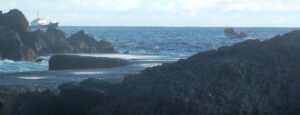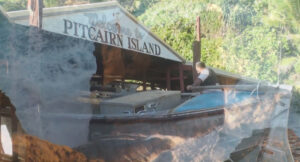Why do so many linguists undertake research on islands and study the languages of islands? For some researchers, it is appealing from a common sense perspective: Islands are often socially and geographically isolated, the cultural traditions that thrive on such islands are often unique due to the relative isolation of the community, and researchers make the logical leap that this uniqueness could also characterize the island community’s speech. Despite these facts, islands as specific research sites in their own right have been given little direct attention by linguists. The physical segregation, distinctness, and isolation of islands from mainland and continental environments may provide scholars of language with distinct and robust sets of singular and combined case studies for examining the role of islandness in any appreciation of language. Is there anything particular and peculiar about languages spoken on islands as compared to languages spoken on mainlands and continents? Is it possible to talk about such thing as an island language? Many creoles and other contact languages are spoken on islands. There is a great diversity of islands, locations, geographies, and linguistic mixing around the world.

What constitutes an island is far from clear. If we use the definition that islands are landmasses surrounded by water, we admit that all landmasses are surrounded by water at some point in their geography, and hence all landmasses are eventually islands of some sort. Size does play a role; Australia and Antarctica are islands the size of continents. I postulate the admittedly intuitive and problematic notion that an island community is a community whose members are aware that they live on an island without the help of external maps.
In several island societies, special terms are in use relating to their own or other islands. For instance, in seventeenth century Island Carib, the following terms are given, among others: ámon-chéenti oúbao ‘someone from another island’, balloüèouri, balloüébonocou ‘man from the mainland’, balloucaiti, niballoucayénli ‘change of island’, oubouchoúnacou or lecouchounoucou ‘Carib Indian who resides on a neighboring island’ and guítênnê, ‘head towards another island or the mainland’. Such lexicalizations and compounds are relevant because people identify and name things which are typical for their own island.
Languages spoken in mountainous areas have been claimed to have special features. But why has nothing been claimed for islands? Several scholars have proposed some universals of island languages and refer to archaisms in lexicon and structure and innovation in placenaming, i.e. shared patterns of change, but linguists have not searched for shared features. Other scholars have put forward some grammatical features that may constitute a prototypical island language such as orientation systems related to the coast, ocean streams, a mountain (volcano), and the grammaticalization of elevation in the deictic system. The evidence suggests that there are several intriguing links involving the social history of certain islands, orientation systems, language and isolation, language contact, linguistic isolates, and some hints of how island geographies affect grammar.
Paradoxically, islands seem to be contact zones with exceptional degrees of fluctuation as well as conservatism. The most conservative Germanic varieties are spoken on the island Iceland but also in a valley in the middle of the Swedish mainland. On the other hand, Faroese changed as rapidly as mainland Danish.

Strikingly, less than a handful of islands are home to language isolates, which also suggests that islands are contact zones rather than isolated from the rest of the world. Populations may be more easily replaced or merged in islands. The fact that there are so few language isolates on islands could be because of size and population restraints. Numerically or militarily advantaged populations reaching an island may replace the original population because there are fewer easy escape possibilities as compared to terrestrial situations. In other locations, populations can flee to mountains, deserts, or to other less accessible environments. They are more able to preserve their language. Thus, the replacement rate of languages is higher on islands than elsewhere.
Travel by water was much more common in the past than it is today. One has to disentangle the geographical and modern metaphorical resonances of the terms ‘insular’ and ‘isolated’. A definition of an island as a site of physical removal and segregation might be difficult to substantiate. Many islands appear to be contact zones. In the case of Iceland also, the island is connected to, not separated from, other places by water; human habitation is mostly coastal, and travel by boat may be easier than travel across the inhospitable interior.
Places like Iceland have certainly been more isolated (and one can think, from whom or what?) in some historical moments than others. As insularity is socially produced as well as reflecting some kind of geographical situation, it is worth realizing that degrees of insularity are to a large extent historically contingent.

The Austronesian migrations, first from Taiwan and then through much of the Philippines, Melanesia, and Oceania, were probably partly triggered by lack of space. This showcases how waterways really were highways and in no way hindered the movement of populations. In the case of the Austronesian languages, the linguistic outcome of the disappearing phonemes is compelling: the further east the Oceanic languages are spoken, the fewer consonants are found in these languages.
The language spoken on North Sentinel Island is probably the blankest spot on the map of the world’s languages. Virtually nothing is known about the language (not even if it is only one), and it remains unclassified. Sentinelese might represent the ultimate conceptualization of an isolated island language. The population must have come from elsewhere by water at some point in time. Perhaps Sentinelese will eventually show that islandness can be a characteristic of a language if it is not influenced by other kinds of languages. It is shaped according to specific geographical and topological conditions that constitute a part of their speakers’ everyday reality and possibly even influence their cognitive relation to the environment.

I hope this piece has stimulated others to think more about the nature of the interaction between languages and their incident island environments. There are vast crossover implications for these outlooks to other areas of linguistics like linguistic typology (the study of language types), social typology (people history), language contact studies, and the study of isolates. More research into the character of languages spoken on islands and how relative geographical isolation might have an impact on both the itself and associated sociohistorical linguistic dynamics should lead to a better understanding of what island languages might be.
Read more on languages on islands:
Joshua Nash, Peter Bakker, Kristoffer Friis Bøegh, Aymeric Daval-Markussen, Hartmut Haberland, Dale Kedwards, Carsten Levisen, Jón Símon Markússon, John Ladhams, Joost Roger Robbe, Jeroen Willemsen. 2020. On languages on islands. Acta Linguistica Hafniensia 52(1): 81-136. (The author thanks all co-authors of this published piece for hints of their combined input, which are present in this blog post.)
Joshua Nash (jnash7@une.edu.au) is postdoctoral research fellow at the Discipline of Linguistics, University of New England, Australia. He has studied the languages of Pitcairn Island and Norfolk Island, South Pacific, and the toponymy of Kangaroo Island, South Australia. He was Associate Professor at Aarhus Institute of Advanced Studies, Denmark, in 2018-2019.







